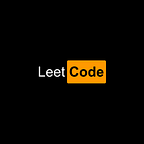Need of the hour — Web3
Web 3 is the need of the hour because it represents a shift towards a more decentralized, autonomous, and equitable internet. It is built on blockchain technology, which allows for the creation of decentralized applications (dApps) that can operate without the need for intermediaries or centralized control.
The current web, often referred to as Web 2, is dominated by a small number of powerful companies that control the flow of information and control access to it. This has led to a number of issues, including the erosion of privacy, the spread of fake news, and the concentration of wealth and power in the hands of a few. Additionally, the centralized nature of the current web makes it vulnerable to censorship and control by governments and corporations.
Web 3, on the other hand, aims to address these issues by creating a more decentralized, autonomous, and equitable internet. Blockchain technology, the underlying technology of Web 3, allows for the creation of decentralized applications (dApps) that can operate without the need for intermediaries or centralized control. This means that individuals and organizations can create and operate their own applications and services, and that users can interact with these applications and services without the need for a centralized intermediary.
One of the key benefits of Web 3 is that it allows for greater privacy and security. Blockchain technology is inherently secure, and the decentralized nature of Web 3 means that there is no single point of failure that can be exploited by hackers or other malicious actors. Additionally, Web 3 allows for the creation of decentralized identity systems, which give individuals more control over their personal data and online identity.
Another important aspect of Web 3 is its potential to promote greater economic inclusion. Blockchain technology allows for the creation of decentralized financial systems that can operate without the need for intermediaries, such as banks. This could enable individuals and organizations in developing countries and other underbanked regions to access financial services and participate in the global economy. Additionally, Web 3 can enable the creation of decentralized autonomous organizations (DAOs) that can operate without the need for centralized control, allowing for more equitable distribution of power and resources.
Web 3 also has the potential to promote greater freedom of expression and access to information. The decentralized nature of Web 3 means that there is no single point of control that can be used to censor or control the flow of information. Additionally, Web 3 can enable the creation of decentralized content distribution platforms that can operate without the need for intermediaries, allowing for greater access to information and greater freedom of expression.
In summary, Web 3 represents a shift towards a more decentralized, autonomous, and equitable internet. It is built on blockchain technology and allows for the creation of decentralized applications that can operate without the need for intermediaries or centralized control. This has the potential to address a number of issues with the current web, including the erosion of privacy, the spread of fake news, and the concentration of wealth and power in the hands of a few. Additionally, Web 3 has the potential to promote greater economic inclusion, freedom of expression and access to information. As such, it is a need of the hour.
However, it is important to note that Web 3 is still in its early stages of development, and it is not yet clear how it will be adopted and utilized in practice. Additionally, there are still many technical and regulatory challenges that need to be addressed before Web 3 can reach its full potential. Nevertheless, the potential benefits of Web 3 are significant, and it is worth keeping an eye on its development and potential impact on the future of the internet.
